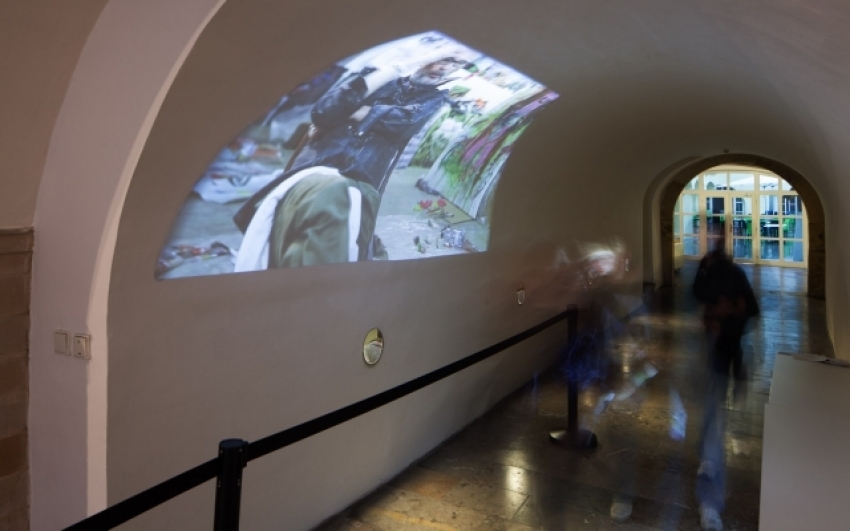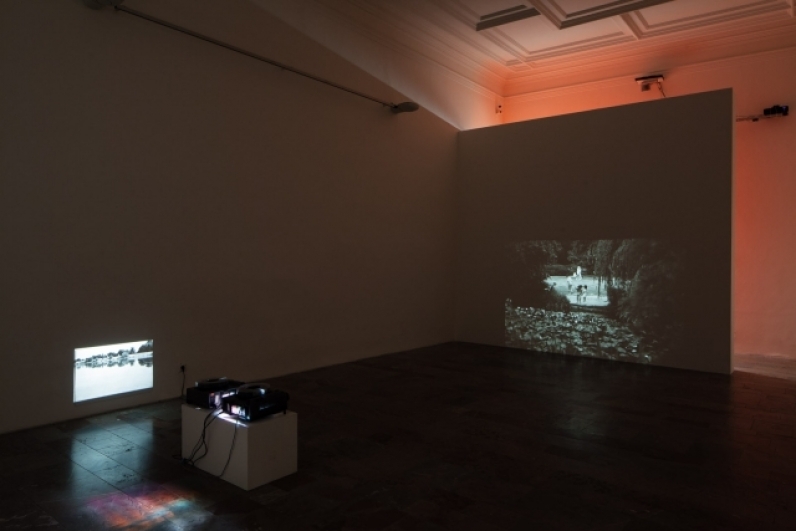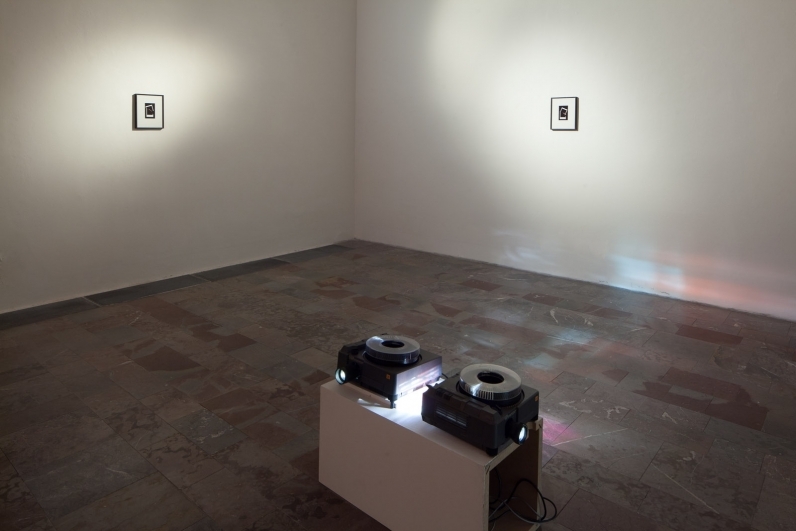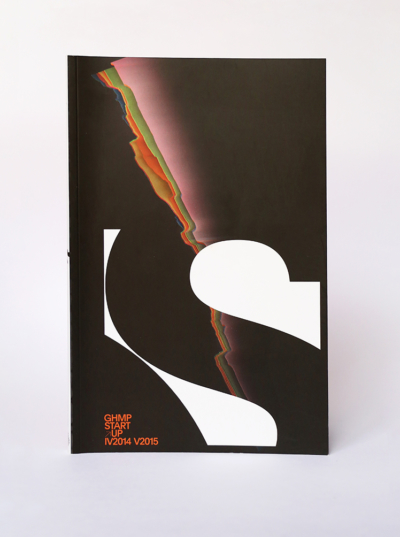Start up: Kateřina Zochová – Reverberation 12. 9. 2014 – 9. 11. 2014
The fifth edition of the project Start up will introduce works by five up-and-coming young artists, along with information about the studios where they have studied. The individual shows will be accompanied by a number of supplementary programmes supervised by the participating artists and/or their teachers, a video shown at the exhibition, and a 16-page magazine FILES in the limited edition of 200 pieces.
Kateřina Zochová (*1986 in Kadaň) is an artist whose output straddles the borderline between the media of photography and animated film. She is also active as a musician, playing harp, and also “performing” on computer as a member of several formations including the bands Audiofenky, and Over Ocean. Her work draws inspiration from dreams and literary texts, most notably poetry, and newly likewise the writings of Roland Barthes, such as L’Empire des signes.
The first time I saw and listened to Kateřina was at Fotograf Gallery, where she defended her degree thesis entitled “To Lose Something Every Day”. I was immediately impressed by the way her ethereal vocal delivery virtually permeated the exhibition space, piercing through the works on display eventually to evaporate back into the void, enshrouding us in a peculiar atmosphere. This impression has stayed with me since then, determining my relation to Kateřina’s output at large. One of the key motifs present in those exhibits was the element of “missing, in the sense of structuring a story with the use of gaps between the individual fragments of meaning in a pictorial arrangement,” as Kateřina herself described it, with the aim of applying this principle to all the media – i.e., animation, photography, and audio – with which she worked during her studies at the Prague Academy. The exhibition called Reverberation, which we have mounted together as part of the project Start up, links up loosely, in dialogue style, with her graduation thesis work. This comes quite organically, the latter being still a fauly recent experience which has left some of its driving mechanisms continually vibrant. The new works relate to a recent output of collages which remind me of mornings bringing back to our minds fragments of dreams which, however, we are unable to recollect in their entirety. At the same time though, they can also serve as vehicles of reminiscence as they tend to provoke us obliquely to try and reconstruct, at least partially, their contents. At the same time, Kateřina engages in playing her own game with us so we can never be sure whether the story of a particular work is actually a modelled dream or rather our own flashback, or else her skill at implanting into our minds a particular idea.
The current show has its keynote, in terms of an impulse for further development, in the presence of a digital photograph tampered with by means of black cutouts, inspired by a picture postcard featuring the portrait of a girl by Spanish Symbolist painter Julio Romero de Torres, found by chance in a secondhand bookshop. Gifted by a magnifying-glass eyesight, Kateřina has felt a manifest affinity for detail, and so she readily spotted in the picture a motif identical with one she herself had employed earlier on, in her final thesis work: namely, that of a surreptitious hand gesture, which she then developed further in photographic and drawing collages.
Kateřina Zochová recently graduated from the Painting Studio II headed by Vladimír Skrepl at the Academy of Fine Art in Prague.
Studio Painting II, the head teacher Vladimír Skrepl, assistant professor Jiří Kovanda
Vladimír Skrepl is a visual artist, apart from which he is likewise active as a musician, performer, and senior lecturer at the Painting Studio II of the Prague Academy of Fine Arts. In that last-mentioned post, he has since 1994 been an associate head, along with Jiří Kovanda, of a “laboratory” and “protected experimental zone” which has focused on the training of artists working in a wide range of different media.
Whereas nominally the curriculum of Vladimír Skrepl’s school would appear to be centered around the medium of painting, and while its students indeed start the course with the study of painting, by no means is it an exception if, by the time of reaching the point of graduation they will have ended up involved in non-painterly disciplines, often even straddling the borderline between art and beyond. This is in fact amply documented by this year’s batch of fresh degree holders, including Kateřina Zochová. Their broad scale of creative approaches and techniques has been inspired by Vladimír and Jiří’s credo which can be summed up in terms of liberal approach to art, with an emphasis on each student’s individual standpoint and an ensuing sharply defined artistic idiom. That said, one should not omit to point to obvious contrasts between the two teachers’ creative make-ups: namely, Vladimír Skrepl’s tendency to freewheeling spontaneity, and the judicious conceptualism of Jiří Kovanda. To seek a logical point of intersection between these two lines, however, would be thoroughly useless (which actually applies to the assessment of any type of human relation). Perhaps the most eloquent description is offered by Vladimír himself: “There has been a sense of closeness between the two of us stemming from our common deal as self-taught artists.” Why I mention this here and now is chiefly to set into relief the fact that underlying this diversity is a definite raison d’etre, as Vladimír’s weirdness that in itself serves as a disguise for unbridled candour is ultimately balanced out by just the right degree of sober common sense.




